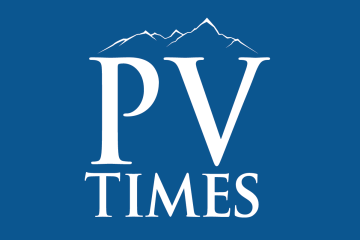Dennis Myers: When journalists believe their own mistakes
There’s a malady in our line of work that involves getting a story wrong at an early stage, and believing it ourselves. It then becomes more difficult to get it right because we become personally invested in it.
Here’s an example. There was a Nevada election early in the 2000s. Some local news people, at their polling places in the morning, saw a lot of people voting. They then reported to their newsrooms that there was big turnout. This happened not just in my television newsroom, but across the state.
These were not experienced political journalists, so they did not know that in every election there are usually morning lines at polling places, when people stop on their way to work. Good morning turnout, however, does not mean good turnout on that election DAY. But our coverage all evening reported big turnout.
The next day, I was assigned to write a turnout voice-over for our anchors to read. I called Curtis Gans at the Committee for the Study of the American Electorate. He usually had turnout figures for all states within a day. He gave me percentages for Nevada, showing that – as usual – Nevada had dismal turnout. I wrote it, and turned it in. Later, the anchor asked about it, and I told her my source. “Well, I don’t believe it,” she said. “And I don’t know this organization.” She highlighted the story in the teleprompter copy and deleted it.
I could not stand knowing that the public would go on believing this myth we had created, so the next day I put together a reporter piece with the correct figures. Anchors only introduce reporter pieces, so the public got the accurate information, albeit late.
I recently wrote in this space (March 13, 2019) how journalist I.F. Stone in 1957 exposed the U.S. government claim that the first underground atomic test in Nevada was seismically undetectable, a claim federal officials made to avoid a nuclear test ban treaty.
But Stone was a blacklisted reporter with his own eventually legendary newsletter (I.F. Stone’s Weekly), and jealous mainstream journalists did not report his scoop, though it was the subject of a Senate hearing that established its accuracy.
As a result, the detectability of nuclear tests remained little known. So the joint chiefs and atomic scientist Edward Teller could continue torpedoing a test ban. Sen. John Kennedy even repeated the myth in the fourth 1960 presidential debate.
And the press continued believing it. In 1965, journalist Seymour Hersh wrote an Associated Press story quoting a secret Pentagon report that said underground tests WERE detectable.
In his recent autobiography, Hersh reports that the Washington Post did not run the story because a Pentagon source told them it was false!
“All governments lie, but disaster lies in wait for countries whose officials smoke the same hashish they give out,” Stone said. The same is true of the press.
Dennis Myers is an award-winning journalist who has reported on Nevada’s capital, government and politics for several decades. He has also served as Nevada’s chief deputy secretary of state.











